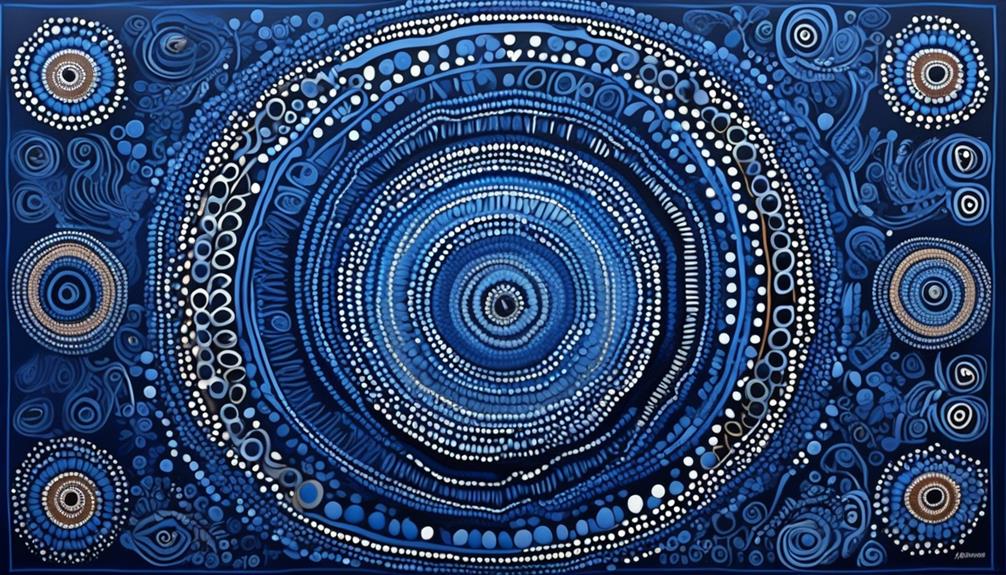As a native English speaker, you may think you have a complete understanding of all aspects of grammar, but there is more to it than meets the eye.
The question of whether native English speakers truly learn grammar is a complex one, influenced by various factors that go beyond just speaking the language. As we navigate through the intricacies of this topic, we'll uncover the surprising ways in which grammar plays a role in your everyday communication, education, and even cultural attitudes.
But before we dive into that, let's consider the impact of early language exposure and the role of formal education in shaping your understanding of grammar.
Key Takeaways
- Early language exposure and formal education play significant roles in shaping the grammatical proficiency of native English speakers.
- Enhanced grammatical proficiency acquired through education leads to improved clarity and precision in written expression, enhancing professionalism and credibility.
- Cultural attitudes towards grammar influence language use and communication practices, including the pressure to conform to grammar standards.
- Grammar integration in everyday speech reflects the unconscious application of linguistic rules, contributing to clarity and precision in communication within specific cultural and social contexts.
Influence of Early Language Exposure
Early language exposure significantly shapes the grammatical development of native English speakers, influencing their linguistic competence and proficiency. Language development in children is greatly influenced by the linguistic input they receive during the critical period of cognitive development. The exposure to rich and varied language forms during this period plays a crucial role in shaping their grammatical knowledge and skills. Research has shown that children who are exposed to complex sentence structures, diverse vocabulary, and grammatical nuances from an early age tend to demonstrate advanced grammatical abilities in their speech and writing.
Cognitive development also plays a vital role in the acquisition of grammar. As children's cognitive abilities mature, they become more adept at processing and internalizing the grammatical patterns of the language to which they're exposed. This interaction between language development and cognitive development highlights the intricate nature of grammar acquisition in native English speakers.
Understanding the influence of early language exposure on grammar acquisition is essential for educators and caregivers in creating an environment that fosters linguistic and cognitive growth in children.
Role of Formal Education

Formal education significantly enhances the grammatical proficiency of native English speakers, providing structured learning experiences that reinforce and expand their linguistic knowledge and skills. Formal instruction in grammar within educational settings plays a crucial role in shaping individuals' language development. Through explicit teaching of grammar rules, syntax, and sentence structure, formal education equips learners with the necessary tools to comprehend and produce complex linguistic expressions. Below is a table highlighting the key ways in which formal education contributes to the language development of native English speakers.
| Role of Formal Education in Language Development | |
|---|---|
| Enhanced Proficiency | Formal instruction improves mastery of grammar and syntax. |
| Expanded Vocabulary | Structured learning experiences facilitate the acquisition of new words and their appropriate usage. |
| Effective Communication | Grammar lessons enable learners to construct coherent and meaningful sentences, enhancing their oral and written communication skills. |
Through formal education, individuals receive systematic guidance in understanding the intricacies of the English language, thereby fostering their linguistic competence. This structured approach not only aids in grasping grammatical concepts but also nurtures an appreciation for the nuances of language.
Impact on Written Communication
Enhancing grammatical proficiency through formal education significantly impacts native English speakers' written communication skills, allowing them to construct coherent and meaningful written expressions. This proficiency in grammar acquired through education plays a pivotal role in shaping written expression and language proficiency.
The impact on written communication is profound and multifaceted, influencing various aspects of language usage and composition.
- Clarity and Precision:
Improved grammatical knowledge enables you to convey your ideas with clarity and precision. You can effectively structure sentences, use appropriate punctuation, and apply grammatical rules to enhance the coherence of your written work.
- Professionalism and Credibility:
A high level of grammatical proficiency cultivated through formal education elevates the quality of your written communication, enhancing professionalism and credibility. Employers, colleagues, and academic institutions often perceive individuals with strong written communication skills as more competent and reliable.
Cultural Attitudes Towards Grammar

Cultural attitudes towards grammar significantly influence language use and communication practices in diverse societies, shaping the perceptions and behaviors of individuals toward linguistic correctness. Language stigma, often associated with deviations from prescribed grammar rules, impacts societal expectations regarding language use.
In many cultures, there's a prevailing notion that adhering to grammar rules is a sign of intelligence, education, and social status. Consequently, individuals may feel pressured to conform to these standards to avoid being stigmatized or judged negatively. This can lead to anxiety and self-consciousness about linguistic expression, affecting both spoken and written communication.
Moreover, cultural attitudes toward grammar can also influence the way language is taught and learned within educational systems. In societies where grammar correctness is highly valued, there may be a greater emphasis on formal grammar instruction in schools. This can perpetuate the idea that linguistic correctness is the ultimate goal of communication, potentially overshadowing the importance of effective and meaningful expression.
Understanding the cultural attitudes toward grammar is essential for language learners and educators, as it provides insights into the societal influences on language use and learning. By acknowledging and critically evaluating these attitudes, individuals can develop a more nuanced understanding of language and strive for effective communication while navigating societal expectations.
Integration of Grammar in Everyday Speech
The integration of grammar in everyday speech reflects the unconscious application of linguistic rules and structures in natural communication, shaping the clarity and precision of language usage. When considering the integration of grammar in everyday usage, it's evident that individuals naturally acquire grammar through exposure to language in various contexts.
This natural acquisition occurs through consistent interaction with others and exposure to a wide range of linguistic expressions, leading to the internalization of grammatical structures and rules. The following points shed light on the significance of grammar integration in everyday speech:
- Clarity and Precision:
Everyday usage of grammar contributes to the clarity and precision of communication, enabling individuals to convey their thoughts and ideas effectively.
- Cultural and Social Context:
The integration of grammar in everyday speech is influenced by cultural and social factors, reflecting the nuances and intricacies of language usage within different communities.
Frequently Asked Questions
Are There Any Specific Grammar Rules That Native English Speakers Struggle With More Than Others?
When it comes to grammar challenges, native English speakers often struggle with irregular verb forms, tense usage, and subject-verb agreement.
These difficulties arise from the complex nature of English grammar and the language's evolution over time.
Despite being a native speaker, mastering these rules can be challenging due to their nuances and exceptions.
However, with practice and understanding, you can overcome these challenges and achieve proficiency in English grammar.
How Does the Use of Slang and Informal Language Impact Native English Speakers' Understanding and Use of Grammar?
Using slang and informal language in everyday conversations impacts your understanding and use of grammar. It can lead to confusion and misinterpretation of proper grammar rules. Incorporating colloquial speech may hinder your ability to communicate effectively in formal settings.
Can Exposure to Different English Dialects and Accents Affect a Native English Speaker's Grammar Skills?
Exposure to different English dialects and accents can indeed affect your grammar skills. Pronunciation variations and regional influences can subconsciously impact your speech patterns and grammatical structures.
As a native English speaker, being exposed to diverse linguistic styles can enrich your language proficiency. However, it's important to remain mindful of how these influences may shape your grammar, and actively seek to maintain a standard level of proficiency in formal written and spoken English.
Are There Any Common Misconceptions About Grammar That Native English Speakers Often Have?
Common misconceptions about grammar are widespread among native English speakers. Many tend to misuse common grammar rules, often resorting to slang and informal language. This can lead to a lack of mastery in formal communication.
The misconception that grammar is only important in academic or professional settings is prevalent. However, understanding and using grammar correctly is crucial for effective communication in all aspects of life.
How Does the Rise of Technology and Digital Communication Impact Native English Speakers' Grammar Knowledge and Usage?
The rise of technology and digital communication has significantly impacted native English speakers' grammar knowledge and usage. Language evolution, influenced by communication habits, has led to shifts in grammar awareness.
With the prevalence of informal digital communication, grammar rules may be overlooked or adapted. It's crucial for native English speakers to actively maintain their grammar skills amidst evolving language trends. Understanding these changes and adapting appropriately is essential for effective communication.
Conclusion
So, do native English speakers learn grammar? The evidence suggests that they do, through a combination of early language exposure, formal education, and cultural attitudes.
Despite the challenges of integrating grammar into everyday speech, English speakers are able to master the rules and conventions of the language.
Just as a chef carefully measures and mixes ingredients to create a delectable dish, English speakers diligently study and apply grammar to craft clear and effective communication.
Mary is a passionate writer who brings creativity and a fresh perspective to our team. Her words have the power to captivate and inspire, making her an essential contributor to our content. Mary’s commitment to storytelling and dedication to promoting Indigenous culture ensures that her work touches the hearts of our readers. We’re fortunate to have her as part of our team.









